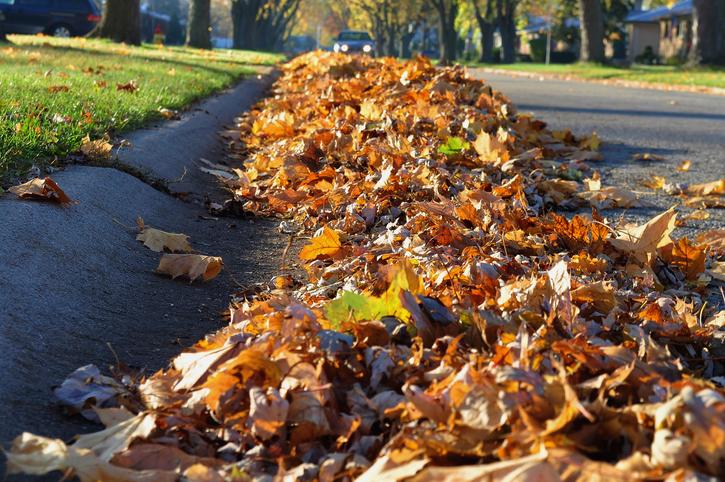

(844) - 444-4444

It’s an ordinary rite of fall. Blowers buzz in the distance. Rake prongs scrape the earth as they pull crispy, expired leaves along the ground in the direction of the curb.
It is here, near the roadway, that they will be devoured by a leaf vacuum in a couple days. Sometimes these roadside leaf piles can get big. Sometimes so big they spill into the roadway itself, occupying a substantial portion of a lane of travel.
What if a big leaf pile in the lane of travel causes or contributes to a car crash? Who is responsible?
As we have covered in these pages, New York drivers must always operate their vehicles in a reasonable manner accounting for all circumstances. If those circumstances involve a large leaf pile partially occupying a lane of travel, adjustments should ordinarily be taken to account for that roadway condition. For example, if two motorists are traveling in opposite directions and one motorist travels across the double yellow centerline to avoid a leaf pile, thereby striking the other vehicle head-on, that may support a showing of liability against the motorist who crossed over. That would be a violation of the Vehicle and Traffic Law, which could be negligence per se, supporting a finding of liability.
It is well documented that wet leaves can become very slippery, sometimes more slippery than black ice. If a November rain saturates leaves on the roadway and a vehicle is caused to lose control because of the wet leaves, there is an argument that the person who placed the leaves in the roadway could bear responsibility for any resulting crash. New York Vehicle and Traffic Law 1219 (a)-(b) provides that:
(a) No person shall throw or deposit upon any highway any glass bottle, glass, nails, tacks, wire, cans, snow or any other substance likely to injure any person, animal, or vehicle upon such highway.
(b) Any person who drops, or permits to be dropped or thrown, upon any highway any destructive or injurious material or any material which interferes with the safe use of the highway shall immediately remove the same or cause it to be removed.
In Lastowski v. VS Virkler & Son, Inc. the Court found that “stone dust” qualifies as a substance likely to injure people on the roadway. In Stanton v. Gasport View Dairy Farm, Inc. the Court found that “mud” qualified. We were not able to find a reported case where wet leaves qualified as a hazardous substance under New York Vehicle and Traffic Law 1219 (a)-(b), but that does not mean that wet leaves do not qualify. If an injured motorist were to prove in a court of law that, given their unique properties, wet leaves are hazardous, a New York court could find that such leaves qualify under the rule.
The attorneys at William Mattar, P.C. have extensive experience helping injured New York motorists receive maximum compensation for their pain and suffering. Our attorneys have the knowledge to help identify all potentially liable parties and use the rules of evidence to build a strong case. If you were injured in a New York car crash, do not hesitate to give us a call.





